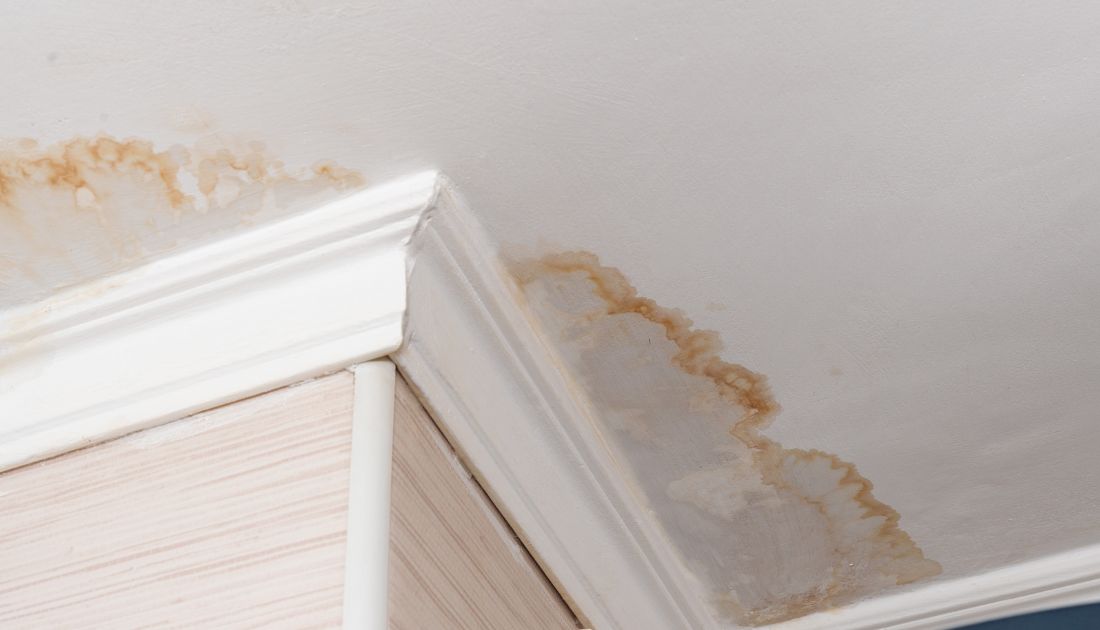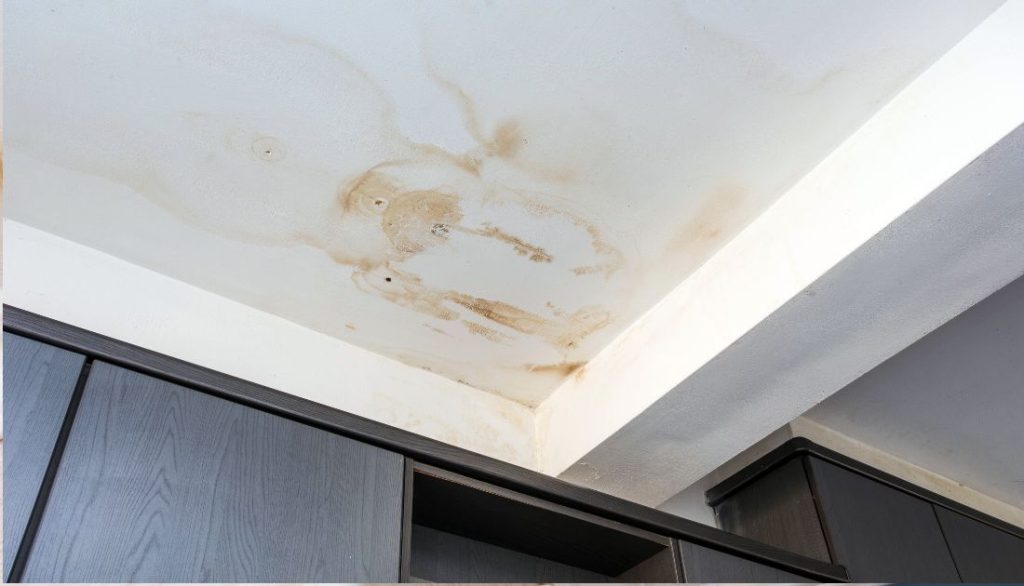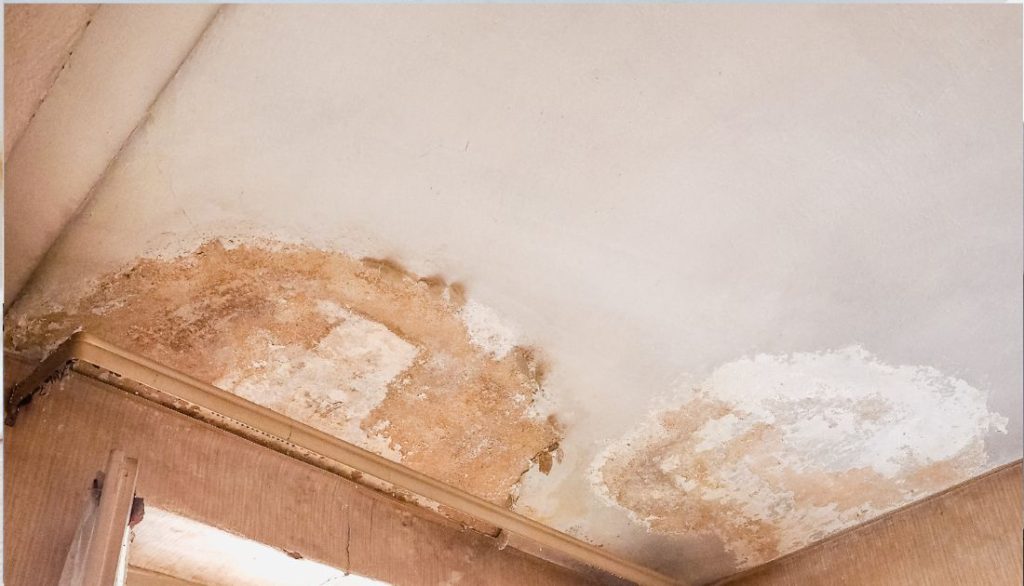Table of Contents
Water stain on ceiling can be a common and unsightly issue for homeowners, caused by leaking roofs, overflowing plumbing fixtures, or condensation buildup. Not only do water stains detract from the aesthetic appeal of your home, but they can also be a sign of underlying structural damage and potential health hazards such as mold growth.
Moreover, these stains typically appear as discolored patches, ranging from yellow to brown, and may indicate ongoing water damage. Ignoring them can lead to more severe issues, such as mold growth, structural damage, and compromised insulation. To address water stains, first identify and fix the source of the leak. Regular maintenance and prompt attention to leaks are crucial in preventing water stains and ensuring the longevity of your home’s structure.
Understanding the Causes of Water Stain on Ceiling
Water stain on ceiling can be frustrating, but understanding their causes is crucial to preventing future damage. Here are some common reasons why water stains may appear:
- Leaky Roof: A leaky roof is one of the main culprits behind water stains on ceilings. If there are missing shingles or damaged flashing, rainwater can seep into your home and create unsightly marks.
- Plumbing Issues: Another potential cause of water stains is plumbing problems. Leaking pipes or clogged drains can lead to water pooling in areas where it shouldn’t, eventually leaving stains on your ceiling.
- Condensation: Excessive moisture in the air can also contribute to water stains. Poor ventilation in bathrooms or kitchens can result in condensation buildup, which can eventually discolor the ceiling.
Step-by-Step Guide to Removing Water Stains
- Assess the Damage: Start by identifying the source of the water leak and fixing it to prevent further staining.
- Prepare a Cleaning Solution: Mix equal parts water and white vinegar or bleach for a powerful stain-fighting solution.
- Apply the Solution: Using a sponge or cloth, gently dab the cleaning solution onto the stained area, being careful not to saturate it too much.
- Let It Sit: Allow the solution to sit on the stain for several minutes to penetrate and break down any lingering residue.
- Repeat if Necessary: For stubborn stains, repeat this process until you see improvement before rinsing clean with water once satisfied.
- Note: Always ensure proper ventilation when using bleach solutions.
Tools and Materials You Will Need
Utility knife: for cutting away any damaged drywall or ceiling material
Sandpaper: to smooth out rough areas on the ceiling after removing the water stains
Primer and paint: to cover up the stained areas and restore your ceiling’s appearance
Stain-blocking primer: essential for preventing water stains from bleeding through new paint
Bleach solution or a mold-killing cleaner: to eliminate any mold or mildew that may be causing the water stains
Drop cloths or plastic sheeting: to protect your floors and furniture while working on the ceiling
Before starting any repair work, gather all these tools and materials in one place to ensure a smooth process. They can be easily found at your local hardware store or home improvement center.
Remember, having the right tools is crucial for successfully removing and preventing water stains on your ceiling.
DIY Methods for Water Stain Removal
Vinegar Solution: Mix equal white vinegar and water in a spray bottle. Spray the solution onto the water stain, let it sit for a few minutes, then wipe it clean with a damp cloth.
Baking Soda Paste: Mix baking soda with water to form a paste. Spread the paste over the stained area, then gently scrub with a sponge or brush. Rinse thoroughly with clean water.
Hydrogen Peroxide: Dilute hydrogen peroxide with water in a 1:1 ratio. Apply the mixture to the water stain, allow it to sit for about an hour, then blot with a clean cloth.
These simple DIY methods can help remove unsightly water stains on your ceiling without breaking the bank.
Remember to test these solutions on a small, inconspicuous area first to ensure they do not damage your ceiling surface.
Professional Remediation Options
- Hire a Professional Water Damage Restoration Company: If the water stain on your ceiling is extensive or if you suspect there may be more serious underlying issues, it’s best to hire a professional water damage restoration company. These experts have the tools, experience, and knowledge to assess the situation accurately and remediate it effectively.
- Consider Mold Remediation Services: Water stains on your ceiling can sometimes be a sign of mold growth. If you notice any signs of mold, such as a musty smell or discoloration on the ceiling, consider hiring a professional mold remediation service. Mold can pose serious health risks and should be addressed promptly by professionals.
- Roof Repair or Replacement: In some cases, water stains on your ceiling may be due to roof leaks. If this is the case, consult with a roofing contractor to assess the extent of damage and determine whether repairs or replacements are necessary. Addressing roof issues promptly can prevent further water stains and potential structural damage in your home.
Preventing Water Stains in the Future
Inspect your roof regularly: Check for any signs of damage or leaks that might cause water stains on your ceiling. Address any issues right away to prevent further harm.
Keep gutters and downspouts clean: Clogged gutters can cause water to leak into your home, leading to potential water stains. Keep gutters free of debris to ensure the process of proper drainage.
Monitor indoor humidity levels: High humidity levels can contribute to condensation and, eventually, water stains. Use a dehumidifier if necessary to maintain optimal humidity levels in your home.
Regular Maintenance Tips for Ceiling Care
Inspect your ceiling regularly: Check for any indications of water stains, leaks, or mold growth. Identifying these problems early can help prevent further damage.
Maintain proper ventilation: Ensure your home is well-ventilated to prevent moisture buildup and condensation on your ceiling. Consider using exhaust fans in bathrooms and kitchens.
Address leaks promptly: If you notice a leak in your roof or plumbing system, address it immediately to prevent water stains from forming on your ceiling. Hire a professional if needed.
When to Seek Help from a Professional
Persistent stains: If water stains on your ceiling keep coming back after you’ve tried multiple DIY methods, it’s time to call in a professional. This could indicate a more serious underlying issue that needs expert attention.
Extensive damage: If the water stain is accompanied by sagging or crumbling drywall, it may be beyond what simple fixes can address. A professional can assess the extent of the damage and recommend the necessary repairs.
If you’re unsure about tackling the problem or notice any signs of mold growth along with the water stain, don’t hesitate to contact a professional for assistance. It’s better to address potential issues early rather than let them escalate and cause further damage to your home.


